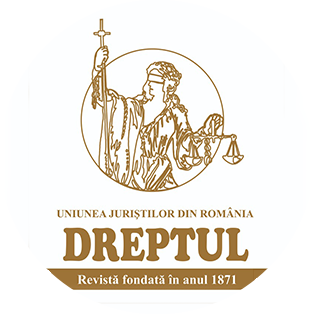-
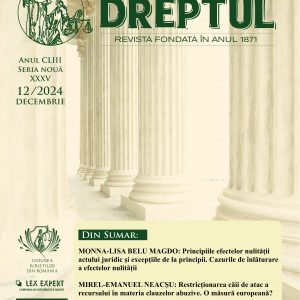
-
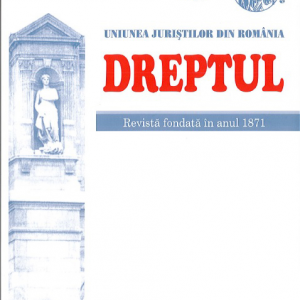 Publicăm mai jos hotărârea Tribunalului Ilfov, dată în procesul dintre Societatea tramvaiurilor și Ministerul de interne, cu prilejul aplicărei legei din 18 Decembrie 1911, și anume părerea motivată a majorităței (d-nii N. Algiu, președinte, și C. Bossie, judecător) și aceea a d-lui judecător I. G. Manu.
Publicăm mai jos hotărârea Tribunalului Ilfov, dată în procesul dintre Societatea tramvaiurilor și Ministerul de interne, cu prilejul aplicărei legei din 18 Decembrie 1911, și anume părerea motivată a majorităței (d-nii N. Algiu, președinte, și C. Bossie, judecător) și aceea a d-lui judecător I. G. Manu. -
 The new Civil Procedure Code, under the impulse of the case law of the European Court of Human Rights, has established for the first time, in the Romanian law, a procedural means intended to be an effective remedy for unjustified tendencies to delay trials: the contestation regarding the delay of the trial. The present approach was occasioned by a recent decision of unconstitutionality regarding the application of the provisions of Article 524 (3) of the Civil Procedure Code. In the introduction of this study, the author makes a general delimitation of the contestation by other procedural means, stating that it can be qualified neither as means of appeal, nor as a civil action or as a special procedure. The author emphasizes the contestation’s nature of procedural incident and of means to remove any obstruction in the settlement of civil cases in an optimal and predictable time limit. The control of constitutionality carried out by the Court concerns a very concrete aspect of the competence to settle the contestation. Through the analyzed decision, the court of constitutional control has appreciated that the settlement of the contestation by the panel notified with the settlement of the main action is likely to affect the objective impartiality of the court. In the present approach, the author considers such an action of the court of constitutional control as being judicious, but expresses reservations regarding the solution of attributing the competence to settle the contestation to the higher court. In justifying this point of view, the author notes also the existence of other similar procedural means the settlement of which is given, however, in the competence of a panel of the court empowered to judge the main action as well. On the other hand, the settlement of the contestation by the superior court is not likely to provide celerity in its settlement.
The new Civil Procedure Code, under the impulse of the case law of the European Court of Human Rights, has established for the first time, in the Romanian law, a procedural means intended to be an effective remedy for unjustified tendencies to delay trials: the contestation regarding the delay of the trial. The present approach was occasioned by a recent decision of unconstitutionality regarding the application of the provisions of Article 524 (3) of the Civil Procedure Code. In the introduction of this study, the author makes a general delimitation of the contestation by other procedural means, stating that it can be qualified neither as means of appeal, nor as a civil action or as a special procedure. The author emphasizes the contestation’s nature of procedural incident and of means to remove any obstruction in the settlement of civil cases in an optimal and predictable time limit. The control of constitutionality carried out by the Court concerns a very concrete aspect of the competence to settle the contestation. Through the analyzed decision, the court of constitutional control has appreciated that the settlement of the contestation by the panel notified with the settlement of the main action is likely to affect the objective impartiality of the court. In the present approach, the author considers such an action of the court of constitutional control as being judicious, but expresses reservations regarding the solution of attributing the competence to settle the contestation to the higher court. In justifying this point of view, the author notes also the existence of other similar procedural means the settlement of which is given, however, in the competence of a panel of the court empowered to judge the main action as well. On the other hand, the settlement of the contestation by the superior court is not likely to provide celerity in its settlement. -
 We are researching the mechanism of proof necessary for the application of the sanction of the automatic exclusion of statements obtained through torture or other ill -treatment contrary to Article 3 of the Convention. The topic has not yet been addressed in Romanian law, although it is of indisputable importance for the practical application of the sanction. Proof to a high standard of ill-treatment is essential to the normative force of the sanction. The difficulty of proving ill-treatment is the main impediment to its application in judicial practice. The resulting problem is solved by the European Court of Human Rights through a mechanism of proof that manages the legal consequences of uncertainty and does not lose sight of the requirement to find out the truth. This mechanism has three main components: The first is the requirement of an arguable claim about the ill-treatment, which is similar to the formal burden of proof (the burden of adducing evidence) in common law, with the difference that it is not imposed on a particular party, but is met if information about ill-treatment comes to the attention of the authorities in any way. The second is the obligation to effectively investigate this claim. The third is the substantial burden of proof or persuasive burden, which must be met to a certain standard of proof. Ill treatment must be proven by the party alleging it to the standard of proof beyond a reasonable doubt, but this standard can be met by corroborated presumptions. We present some typical presumptions applicable in situations frequently encountered in practice. Under Article 6 of the European Convention on Human Rights, the requirements of the fair trial may justify derogations from these general principles. For the automatic exclusion of statements, two cumulative conditions must be verified: the lack of an effective investigation and the real risk of ill-treatment.
We are researching the mechanism of proof necessary for the application of the sanction of the automatic exclusion of statements obtained through torture or other ill -treatment contrary to Article 3 of the Convention. The topic has not yet been addressed in Romanian law, although it is of indisputable importance for the practical application of the sanction. Proof to a high standard of ill-treatment is essential to the normative force of the sanction. The difficulty of proving ill-treatment is the main impediment to its application in judicial practice. The resulting problem is solved by the European Court of Human Rights through a mechanism of proof that manages the legal consequences of uncertainty and does not lose sight of the requirement to find out the truth. This mechanism has three main components: The first is the requirement of an arguable claim about the ill-treatment, which is similar to the formal burden of proof (the burden of adducing evidence) in common law, with the difference that it is not imposed on a particular party, but is met if information about ill-treatment comes to the attention of the authorities in any way. The second is the obligation to effectively investigate this claim. The third is the substantial burden of proof or persuasive burden, which must be met to a certain standard of proof. Ill treatment must be proven by the party alleging it to the standard of proof beyond a reasonable doubt, but this standard can be met by corroborated presumptions. We present some typical presumptions applicable in situations frequently encountered in practice. Under Article 6 of the European Convention on Human Rights, the requirements of the fair trial may justify derogations from these general principles. For the automatic exclusion of statements, two cumulative conditions must be verified: the lack of an effective investigation and the real risk of ill-treatment. -
 The generation of public procurement directives1 adopted in 2014 supplemented the number of exclusion grounds from the contract award procedure, adding, inter alia, the hypothesis from Article 57 (4) (d): „where the contracting authority has sufficiently plausible indications to conclude2 that the economic operator has entered into agreements with other economic operators aimed at distorting competition”. The respective exclusion ground has been regulated in the public procurement directives as an optional ground, being however provided for the Member States the possibility to transpose it into national laws as a compulsory ground. This regulatory modality, which inexplicably restricts the scope of incidence only at the conclusion of agreements, although competition can be affected by other methods, and which allows different transpositions by the Member States, has led many doctrinaires to react critically to the prospect that such an important exclusion ground generate a relatively narrow and non-unitary practice at Union level.
The generation of public procurement directives1 adopted in 2014 supplemented the number of exclusion grounds from the contract award procedure, adding, inter alia, the hypothesis from Article 57 (4) (d): „where the contracting authority has sufficiently plausible indications to conclude2 that the economic operator has entered into agreements with other economic operators aimed at distorting competition”. The respective exclusion ground has been regulated in the public procurement directives as an optional ground, being however provided for the Member States the possibility to transpose it into national laws as a compulsory ground. This regulatory modality, which inexplicably restricts the scope of incidence only at the conclusion of agreements, although competition can be affected by other methods, and which allows different transpositions by the Member States, has led many doctrinaires to react critically to the prospect that such an important exclusion ground generate a relatively narrow and non-unitary practice at Union level. -
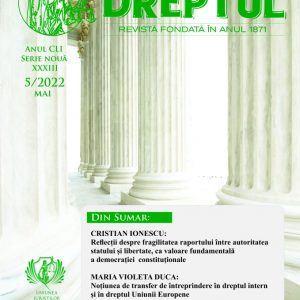 It is necessary in the Romanian criminal procedural law to differentiate the conditions for the exclusion of derivative evidence from the conditions for the irradiation of nullity in continental law and to move them closer to the criteria of the fruit of the poisonous tree originating from the United States of America. We adapt these criteria and other criteria from foreign law systems to the context of Romanian law through the standards of the European Court of Human Rights. One of the conditions for excluding the derivative evidence is that the infringement from which it derives requires the exclusion of the resulting evidence to ensure the fairness of the proceedings. The derivative evidence has the capacity to convey the effect of the violation of the rights of the defence, the right to privacy or domestic law on the fairness of the proceedings, but in such situations the unfairness of the proceedings must be established on a case-by-case basis. The unfairness can be automatic if the infringement concerns Article 3 of the European Convention on Human Rights or consists in entrapment by law enforcement officers. The consequence is the automatic, absolute or relative exclusion of derivative evidence, depending on the nature of the infringement. The derivative nature of the evidence is determined quasi-automatically in the case of entrapment. In other cases, it must be concretely established, on the basis of the conditions of the causal link between the infringement and the evidence: the effect of the primary evidence and the effect of the unlawfulness on obtaining the derived evidence. The conditions for the exclusion of derivative evidence have consequences for its applicability. The sanction is not applicable when the primary evidence is not obtained illegally, but is inadmissible by its nature, because in this case the unlawfulness is missing. This condition is met in the case of acts such as arrest, therefore the exclusion of derivative evidence is applicable. The effect of the infringement is transmitted by means of the stress test in the case of early exclusion, occurs directly in the case of a continuing infringement and must be analyzed, mutatis mutandis, in the case of alternative means of proof concerning the same evidence. Since in the case of the irradiation of nullity according to the continental model the effect of the primary evidence is irrelevant and the effect of the unlawfulness is established in the abstract by law, the sanction is distinct from the exclusion of derivative evidence.
It is necessary in the Romanian criminal procedural law to differentiate the conditions for the exclusion of derivative evidence from the conditions for the irradiation of nullity in continental law and to move them closer to the criteria of the fruit of the poisonous tree originating from the United States of America. We adapt these criteria and other criteria from foreign law systems to the context of Romanian law through the standards of the European Court of Human Rights. One of the conditions for excluding the derivative evidence is that the infringement from which it derives requires the exclusion of the resulting evidence to ensure the fairness of the proceedings. The derivative evidence has the capacity to convey the effect of the violation of the rights of the defence, the right to privacy or domestic law on the fairness of the proceedings, but in such situations the unfairness of the proceedings must be established on a case-by-case basis. The unfairness can be automatic if the infringement concerns Article 3 of the European Convention on Human Rights or consists in entrapment by law enforcement officers. The consequence is the automatic, absolute or relative exclusion of derivative evidence, depending on the nature of the infringement. The derivative nature of the evidence is determined quasi-automatically in the case of entrapment. In other cases, it must be concretely established, on the basis of the conditions of the causal link between the infringement and the evidence: the effect of the primary evidence and the effect of the unlawfulness on obtaining the derived evidence. The conditions for the exclusion of derivative evidence have consequences for its applicability. The sanction is not applicable when the primary evidence is not obtained illegally, but is inadmissible by its nature, because in this case the unlawfulness is missing. This condition is met in the case of acts such as arrest, therefore the exclusion of derivative evidence is applicable. The effect of the infringement is transmitted by means of the stress test in the case of early exclusion, occurs directly in the case of a continuing infringement and must be analyzed, mutatis mutandis, in the case of alternative means of proof concerning the same evidence. Since in the case of the irradiation of nullity according to the continental model the effect of the primary evidence is irrelevant and the effect of the unlawfulness is established in the abstract by law, the sanction is distinct from the exclusion of derivative evidence. -
 The article presents theoretical and practical aspects regarding the exclusion of evidence in the preliminary chamber, taking into account the Decision of the Constitutional Court No 22 of 18 January 2018 regarding the plea of unconstitutionality of the provisions of Article 102 (3), Article 345 (3) and Article 346 (4) of the Criminal Procedure Code, by which the plea of unconstitutionality of the provisions of Article 102 (3) of the Criminal Procedure Code was admitted and it was found that they are constitutional insofar as the phrase „exclusion of evidence”, therein, means also the elimination of the means of evidence from the case file.
The article presents theoretical and practical aspects regarding the exclusion of evidence in the preliminary chamber, taking into account the Decision of the Constitutional Court No 22 of 18 January 2018 regarding the plea of unconstitutionality of the provisions of Article 102 (3), Article 345 (3) and Article 346 (4) of the Criminal Procedure Code, by which the plea of unconstitutionality of the provisions of Article 102 (3) of the Criminal Procedure Code was admitted and it was found that they are constitutional insofar as the phrase „exclusion of evidence”, therein, means also the elimination of the means of evidence from the case file. -
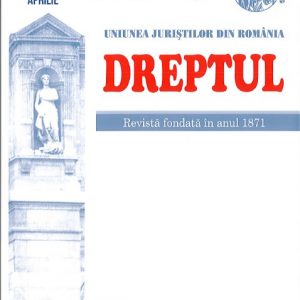 The rule of exclusion remains one of the most controversial issues in the American constitutional doctrine in the field of criminal procedure. The American jurists constantly point out that the rule of exclusion is unique in the field of law, being specific to the American law. However, an increasing number of countries adopt in their legislative system provisions to exclude illegally obtained evidence. This study outlines a few remarks around Article 102 of the Criminal Procedure Code newly introduced in our legislation, trying to bring more clarity on the origin, purpose and ways to invoke the established principle.
The rule of exclusion remains one of the most controversial issues in the American constitutional doctrine in the field of criminal procedure. The American jurists constantly point out that the rule of exclusion is unique in the field of law, being specific to the American law. However, an increasing number of countries adopt in their legislative system provisions to exclude illegally obtained evidence. This study outlines a few remarks around Article 102 of the Criminal Procedure Code newly introduced in our legislation, trying to bring more clarity on the origin, purpose and ways to invoke the established principle. -
 One of the most controversial institutions of Romanian criminal procedural law is the institution of exclusion of evidence. We considered it necessary to carry out this comparative law study so that law practitioners as well as any interested person could observe how this institution appeared and how it is applied in other countries and in the case law of the European Court of Human Rights.
One of the most controversial institutions of Romanian criminal procedural law is the institution of exclusion of evidence. We considered it necessary to carry out this comparative law study so that law practitioners as well as any interested person could observe how this institution appeared and how it is applied in other countries and in the case law of the European Court of Human Rights. -
 One of the most controversial institutions of Romanian criminal procedural law is the institution of exclusion of evidence. We considered it necessary to carry out this comparative law study so that law practitioners as well as any interested person could observe how this institution appeared and how it is applied in other countries and in the case law of the European Court of Human Rights.
One of the most controversial institutions of Romanian criminal procedural law is the institution of exclusion of evidence. We considered it necessary to carry out this comparative law study so that law practitioners as well as any interested person could observe how this institution appeared and how it is applied in other countries and in the case law of the European Court of Human Rights. -
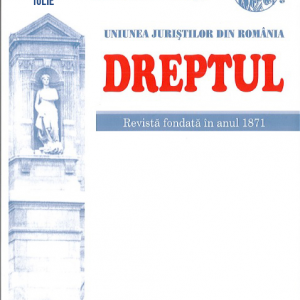 The author summarizes the contractual solidarity principle and its overall consequences. At the core of contractual solidarity lies the requirement of reconciling the contractual interests of the parties. Compliance with this requirement stems from the relationship of solidarity between the parties in the context of contract performance and is intended to govern the being and its execution, including the consequences of breaching this tie, should either party be in default. Contract performance supposes the existence and action of solidarity relationship between the Contracting Parties, each laying under the obligation to accomplish the contractual interests of the other Party. Effective and beneficial accomplishment of said objective is ensured by complying the cooperation and coherence duties, which originate and argument their existence in strict relationship of contractual solidarity. The requirement to reconcile the interests of the parties is valid also if difficulties arise for either party during the contract performance. To overcome these difficulties, the parties are required to comply with two duties: the duty of tolerance and the duty of contract adjustment. Finally, the author reveals that the requirement above is meant to govern also consequences arisen from the breach of solidarity ties, in terms of contract unlawful non-performance. Thus, in selecting and implementing remedies and powers it may appeal to, the creditor is bound to comply with the internal consistency of the contract and the duty of fair proportionality or measures; the aim of these duties is the taking-up by the creditor of behaviors consistent with the purpose of the privilege chosen, without contradictions and disproportions in terms of the seriousness of unlawful contract nonperformance by the debtor.The author concludes that the constituent elements of contractual solidarity, on account of their action and effects, are likely to ensure proper performance of duties, to save contracts existence and, ultimately, to accomplish the interests of contracting parties, the purpose of any contractual tie.
The author summarizes the contractual solidarity principle and its overall consequences. At the core of contractual solidarity lies the requirement of reconciling the contractual interests of the parties. Compliance with this requirement stems from the relationship of solidarity between the parties in the context of contract performance and is intended to govern the being and its execution, including the consequences of breaching this tie, should either party be in default. Contract performance supposes the existence and action of solidarity relationship between the Contracting Parties, each laying under the obligation to accomplish the contractual interests of the other Party. Effective and beneficial accomplishment of said objective is ensured by complying the cooperation and coherence duties, which originate and argument their existence in strict relationship of contractual solidarity. The requirement to reconcile the interests of the parties is valid also if difficulties arise for either party during the contract performance. To overcome these difficulties, the parties are required to comply with two duties: the duty of tolerance and the duty of contract adjustment. Finally, the author reveals that the requirement above is meant to govern also consequences arisen from the breach of solidarity ties, in terms of contract unlawful non-performance. Thus, in selecting and implementing remedies and powers it may appeal to, the creditor is bound to comply with the internal consistency of the contract and the duty of fair proportionality or measures; the aim of these duties is the taking-up by the creditor of behaviors consistent with the purpose of the privilege chosen, without contradictions and disproportions in terms of the seriousness of unlawful contract nonperformance by the debtor.The author concludes that the constituent elements of contractual solidarity, on account of their action and effects, are likely to ensure proper performance of duties, to save contracts existence and, ultimately, to accomplish the interests of contracting parties, the purpose of any contractual tie. -
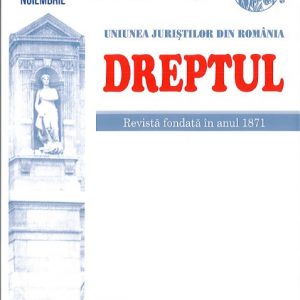 Within this study, the authors intend to analyse the enforcement of judgments pronounced by the administrative disputes courts, in the light of the general provisions of the Civil Procedure Code and of the special provisions of the Law on administrative disputes No 554/2004, as well as of the case law in this matter.
Within this study, the authors intend to analyse the enforcement of judgments pronounced by the administrative disputes courts, in the light of the general provisions of the Civil Procedure Code and of the special provisions of the Law on administrative disputes No 554/2004, as well as of the case law in this matter.
